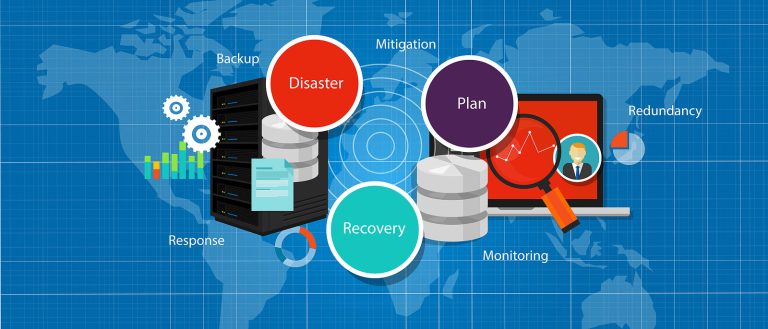Network Management: Exploring the Basics
With the growth of global networks and cloud computing, today’s business runs on highly complex corporate networks, including Internet-based networks that deliver cloud-based services. These networks’ capabilities have transformed business operations, increasing reliance on network stability, performance, and security.
Table of Contents
ToggleNetwork Management
Network management refers to the proper administration, operation, and maintenance of computer networks to ensure stability, performance, and security needs are realized, ensuring they function optimally. To achieve this, the field has evolved to include several related disciplines, like monitoring, capacity and performance management, vulnerability, and security. It is considered a core IT function needed to deliver digital services that ensure business success.
Cloud-Based Network Management
Cloud-based network management administers, manages, and operates a network infrastructure using cloud computing technologies and services. This approach leverages the cloud to deliver network services and manage network resources, offering several advantages over traditional, on-premises network management systems.
The Essentials of Network Management Systems
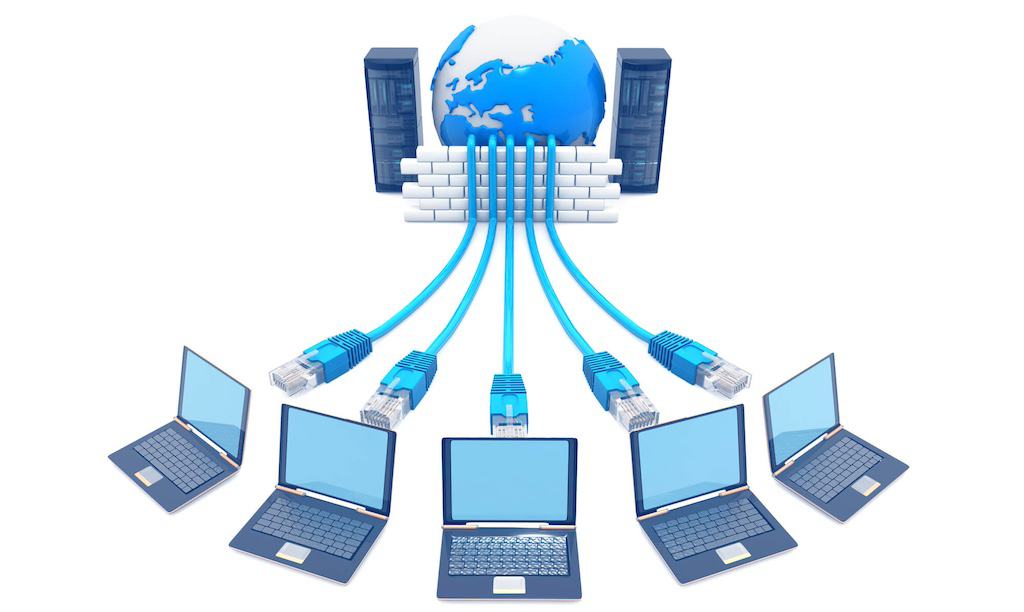
The network management system (NMS) is the software that supports the backbone of network operations. These systems provide a centralized platform for monitoring and managing network devices such as routers, switches, and other access points. NMS collects and analyzes data, providing insights into network security, performance, and potential issues. They can be on-premise solutions or cloud network management systems that support networks that deliver cloud services.
This data collected by the NMS is crucial for network administrators to make informed decisions and implement proactive strategies to maintain network health. Combining the raw data with today’s uses of artificial intelligence enables network managers to handle larger and more complex networks than ever before by using automation to detect trends in the data that require administrator attention.
Network Management Roles
The two primary roles associated with the discipline are the network manager and network administrator. While the two jobs are closely related, they have distinct responsibilities and focus areas within IT.
The Duties of the Network Manager
The network manager sets the overall direction and strategy for the enterprise’s network services, guiding network administrators in their duties.
Primarily, a network manager oversees the network’s infrastructure, including hardware and software components, ensuring that they function seamlessly and meet the organization’s needs.
Network managers are also responsible for managing and leading the network team, including network administrators and vendor management, and for continuity and disaster recovery planning.
The Duties of a Network Administrator
The network administrator works with the network manager toward the success of an organization’s network management practice. They are responsible for daily operations, configuring and maintaining network infrastructure, ensuring network security, and managing network resources. Their expertise is important in deploying and utilizing network management systems, which provide the necessary tools and interfaces for effective network management tasks. Their expertise is needed to automate rules and policies, establish device profiles, and establish the baselines for network monitoring, optimizing, and managing the networks supporting enterprise services.
Their ability to manage these diverse aspects of network operations supports an organization’s technical infrastructure and drives its overall strategic direction. Network administrators must stay abreast of technological advancements and implement best practices to enhance network functionality and resilience. This includes adopting new software tools with advanced features such as automated network analysis, predictive maintenance, and seamless integration with other IT systems.
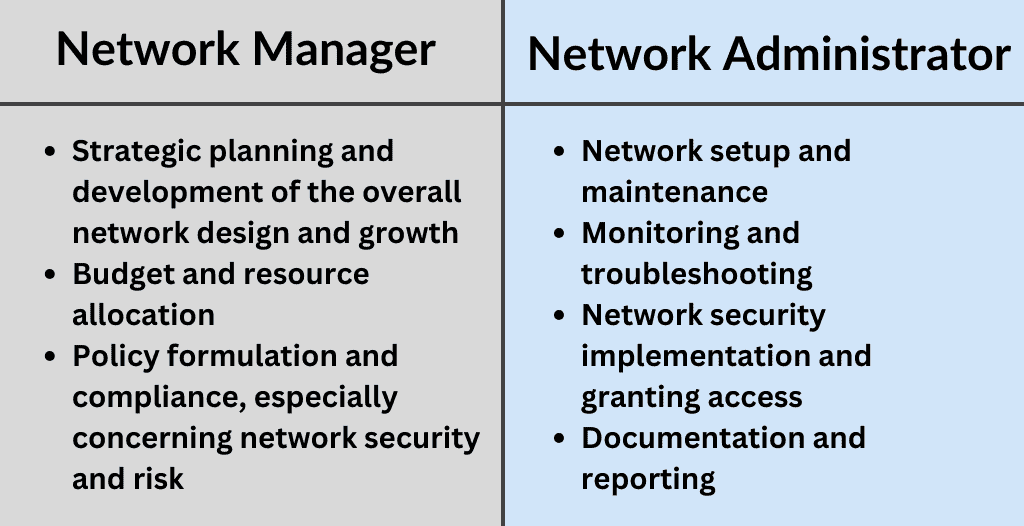
Role Network Management Software
NMS uses a range of systems ranging from monitoring tools to comprehensive management suites, that offer various functionalities. These functions fall into four main areas:
Performance management,
Fault management,
Configuration management, and
Network security and risk management.
With the growing complexity of modern networks, the need for robust and versatile network management software has become more pronounced, especially when the ability to automate repetitive tasks and offer support at scale is considered.
Functional Areas of a Network Management Practice
Managing networks is complex, requiring understanding the five functional areas defined in the ISO network management model. These areas, often called FCAPS, include Fault Management, Configuration Management, Accounting Management, Performance Management, and Security Management. Each area is vital in a strong network assurance program, ensuring the network is reliable, efficient, and secure.
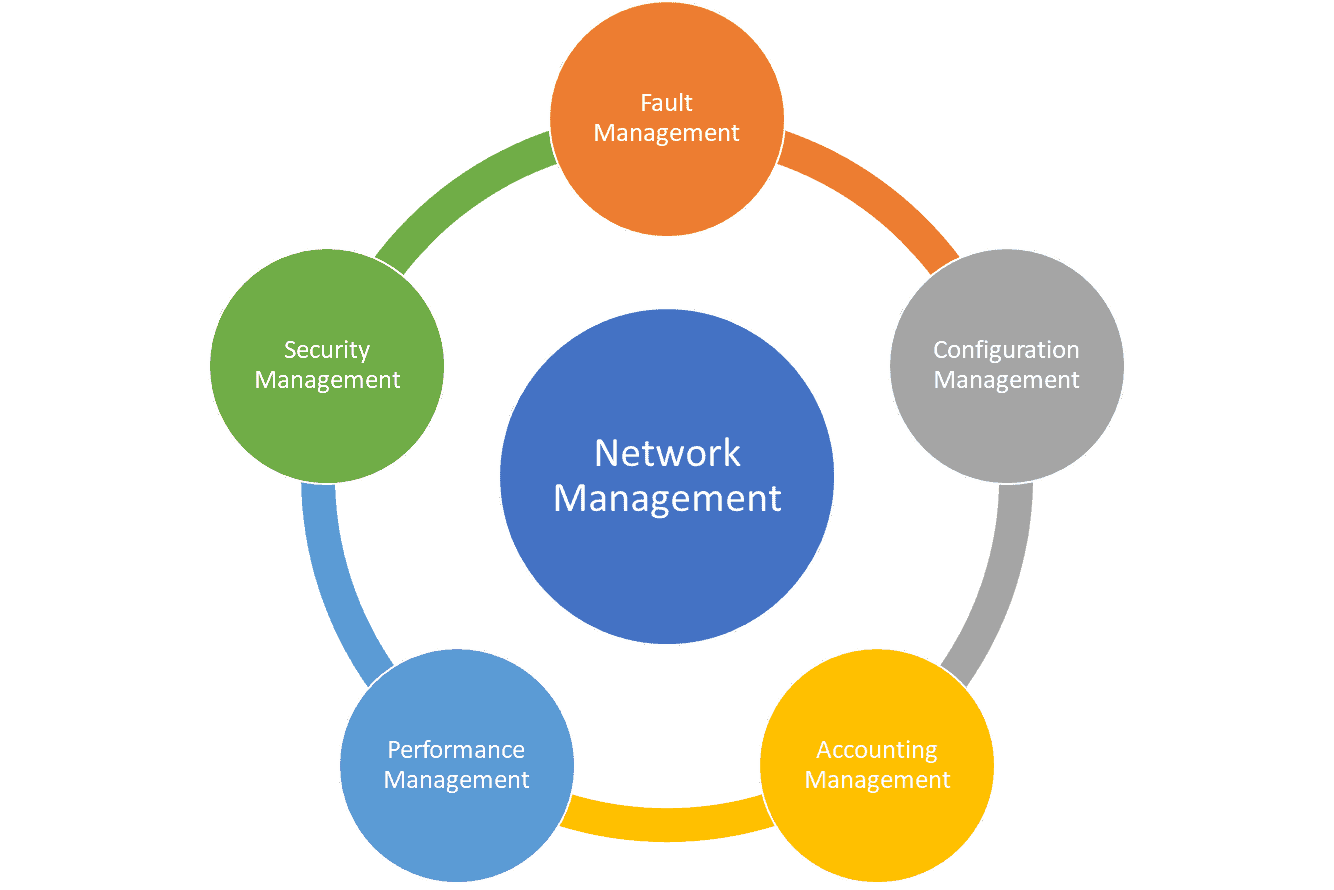
Fault Management
Fault management involves detecting, isolating, and correcting faults in the network. This ensures network availability by proactively monitoring for issues and responding quickly to any network outages or performance degradation.
Monitoring systems are critical to this area, providing alarms and notifications to alert administrators about network anomalies that need attention.
Modern fault management may also include using artificial intelligence to respond to exceptions automatically, increasing the network administrator’s reach in supporting complex networks.
Configuration Management
This area focuses on keeping track of network device configurations and changes made over time.
This enables network administrators to maintain and manage network devices and configurations, ensuring they meet minimum requirements.
Configuration management also helps identify devices and configurations with known security vulnerabilities, enabling network administrators to address the concern and helping restore system operations after failures using previously recorded configurations.
Accounting Management
This area helps understand network usage and costs across business units, helping in fair resource and cost allocation for budgeting or billing purposes.
This is particularly important in large networks where resources must efficiently be distributed among various users or departments or for managed service providers that offer network services.
Performance Management
Performance management monitors and measures various aspects of network performance to maintain overall performance at an acceptable level by tracking network throughout, utilization rates, and response times.
This enables network administrators to make necessary adjustments to the overarching network design, ensuring optimal performance.
Network Security Management
Security management is critical for effective network operation, focusing on protecting the network and its services from unauthorized access and malicious activities.
It includes installing and managing firewalls, intrusion detection systems and implementing security policies.
Security management is responsible for working with security operations teams to identify and remediate security vulnerabilities as they are identified.
It establishes and manages policies that help control access to network resources, ensuring that only authorized personnel can make changes to the network and that only correctly configured and authorized devices can access internal resources.
Managing networks effectively requires attention to each of these areas, ensuring the enterprise network is operational, efficient, secure, and well-maintained.
Key Network Management Protocols: SNMP, NETCONF, and RESTCONF
Network management protocols are the foundation for network communication and management, playing a critical role in configuring, monitoring, and securing network systems, including SNMP (Simple Network Management Protocol), NETCONF (Network Configuration Protocol), and RESTCONF.
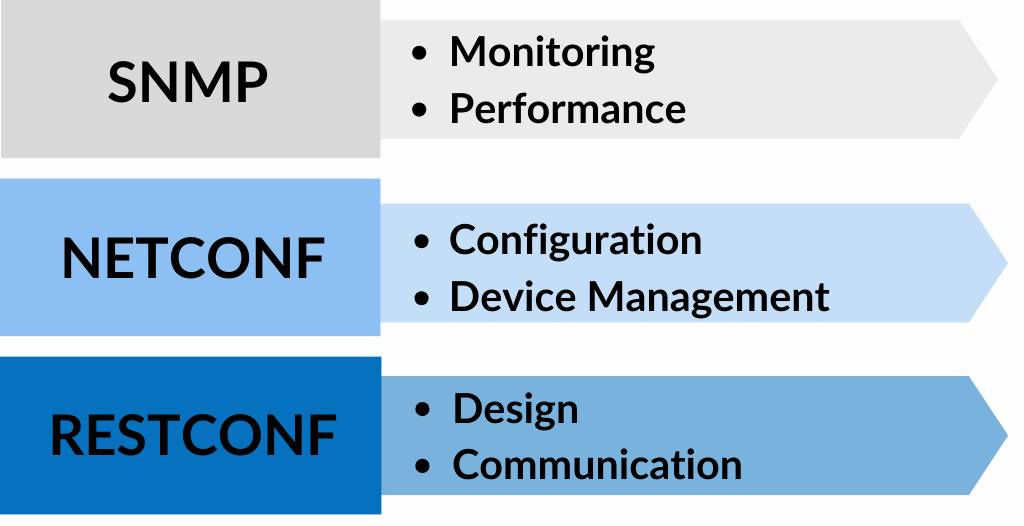
Simple Network Management Protocol (SNMP)
SNMP is widely used by network management protocol administrators to manage network performance and identify potential issues in the network infrastructure.
SNMP facilitates collecting and organizing information about managed devices on IP networks, polls these devices and retrieves important data such as network performance, errors, and other metrics.
Network monitoring systems generally use SNMP.
NETCONF (Network Configuration Protocol)
NETCONF is primarily used for installing, manipulating, and deleting the configuration of network components. While SNMP is used for monitoring, NETCONF focuses on the configuration of network equipment.
It offers a mechanism to change the configuration of network devices systematically and reliably.
NETCONF is essential for network administrators aiming to make precise configuration changes and ensure consistency across network devices.
RESTCONF
RESTCONF is a specialized use of the REST protocol for architectural design and communication, specifically used for configuring network devices by retrieving their configuration and state data.
It provides a mechanism for accessing data defined in YANG, using the HTTP protocol for the operations. It is beneficial for its simplicity and ease of use, particularly when integrating with web services.
RESTCONF is valuable for network administrators who require an efficient way to manage network configurations through a more modern web-based approach.
As networks grow more complex, the importance of robust security practices increases, including the need to safeguard network data, protect against security threats, and adhere to security policies. Effective network management incorporates measures like managing access control, monitoring network traffic for anomalies, and implementing strategies to mitigate vulnerabilities. Network assurance, using artificial intelligence and machine learning to manage these areas, is a vital component of a network management program using network analytics to support its needs.
Goals: Managing Network Resources and Performance
Managing networks ensures that network devices function correctly, network design is optimized, and network performance is maintained at the highest level. The performance management practice entails monitoring key performance indicators, analyzing network utilization, and optimizing network traffic flows to prevent congestion and ensure maximum uptime.
Network performance management also involves identifying and resolving network performance issues by troubleshooting network elements, reconfiguring network devices, or upgrading network hardware to meet the growing demands of the network. Ensuring optimal network performance is essential for providing reliable and uninterrupted services to users.
Network Automation and Advanced Technologies
Network automation has revolutionized managing networks. Network automation enhances efficiency, reduces the likelihood of human error, and ensures optimal network performance management by automating repetitive and routine tasks, such as software upgrades and configuration changes through scripting and orchestration. Advanced technologies, such as artificial intelligence (AI) and machine learning (ML), augment network management by providing predictive analytics and intelligent decision-making capabilities. Automated configuration management lowers the number of errors experienced due to devices having incorrect software levels or other configuration errors.
These technologies enable the network management system to ensure devices are correctly installed, learn from network data, predict potential issues, adjust network configurations for optimal performance, and take other actions pre-defined by network administrators. For example, when network performance monitoring detects a bottleneck, the network management system can take action based on scripts and policies embedded in the system. This improves the network administrator’s efficiency, enabling them to focus on more strategic initiatives.
The Impact of Managed Services Providers

Managed Services Providers (MSPs) play a significant role in the field, especially for organizations needing more in-house resources or expertise to manage their networks. MSPs offer specialized network management services, including monitoring, maintenance, and support, allowing businesses to ensure network performance and security without the overhead of managing it themselves.
MSPs utilize advanced network management tools and protocols to provide comprehensive services. This includes cloud-based network management, which offers scalability, flexibility, and remote access capabilities. By leveraging the expertise of MSPs, organizations can benefit from enhanced network management capabilities, such as proactive monitoring, rapid issue resolution, and strategic advice on network optimization.
Challenges and Future Trends in Network Management
Those who manage networks face various challenges, including the growing complexity of networks, the integration of new technologies, and evolving security threats. Addressing these challenges requires continuous adaptation and advancement in network management practices. Operating at the scale of many corporate networks requires implementing and managing NMSs, including the policies and machine learning capabilities needed to automate network management.
The future will likely see further integration of AI and ML technologies, making networks more autonomous and self-healing. The rise of the Internet of Things (IoT) and the increasing demand for high-speed, reliable networks will also shape the future trends in network management. Additionally, the focus on security will intensify, with more sophisticated methods to prevent and respond to cyber threats as these threats continue to grow and change.
Wrapping Up: The Evolving Landscape of Network Management
This world of managing networks is a dynamic and vital field critical to the functioning of modern organizations. Effective network management will become even more crucial as networks become complex and critical to business operations. The integration of advanced technologies, the role of MSPs, and the continuous evolution of network management practices will shape the future landscape of this essential discipline.
The future for those who manage these complex networks will no doubt see exciting developments that offer enhanced efficiency, security, and performance opportunities. Organizations that stay abreast of these trends and embrace innovative management strategies will be well-positioned to thrive in the digital era.




